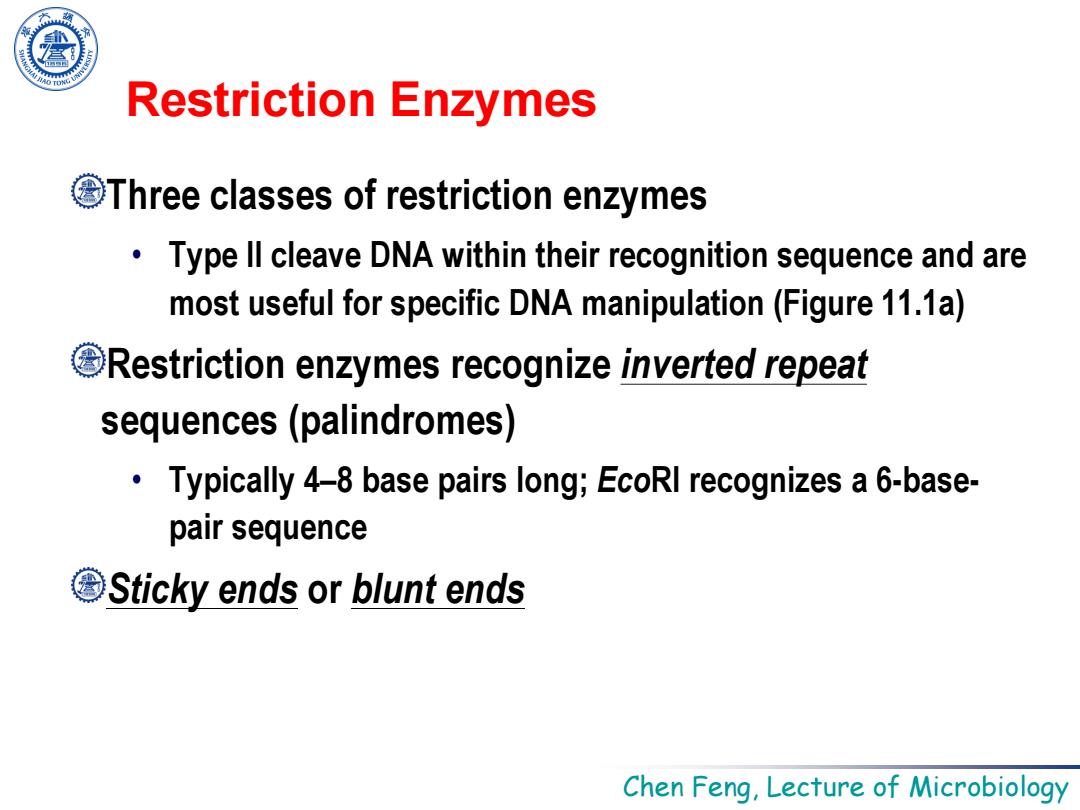正在加载图片...

Restriction Enzymes Three classes of restriction enzymes Type ll cleave DNA within their recognition sequence and are most useful for specific DNA manipulation(Figure 11.1a) Restriction enzymes recognize inverted repeat sequences(palindromes) Typically 4-8 base pairs long;EcoRl recognizes a 6-base- pair sequence Sticky ends or blunt ends Chen Feng,Lecture of MicrobiologyChen Feng, Lecture of Microbiology Three classes of restriction enzymes • Type II cleave DNA within their recognition sequence and are most useful for specific DNA manipulation (Figure 11.1a) Restriction enzymes recognize inverted repeat sequences (palindromes) • Typically 4–8 base pairs long; EcoRI recognizes a 6-basepair sequence Sticky ends or blunt ends Restriction Enzymes